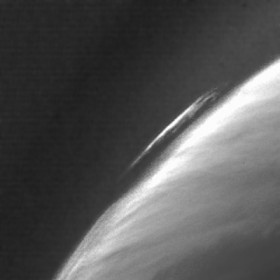
|
Press Release 2/2007
|
 |

|
Press Release 2/2007
|
 |
Press Release 2/2007 - 26th February 2007
An important observing opportunity of ![]() OSIRIS, before Rosetta arrives at 67P/Churyumov-Gerasimenko in 2014, is the Mars swing-by. Rosetta requires the Mars flyby to gain acceleration on a complicated trajectory. OSIRIS was actived during this close fly-by of Mars, and acquired beautiful images of the red planet on 24 February.
OSIRIS, before Rosetta arrives at 67P/Churyumov-Gerasimenko in 2014, is the Mars swing-by. Rosetta requires the Mars flyby to gain acceleration on a complicated trajectory. OSIRIS was actived during this close fly-by of Mars, and acquired beautiful images of the red planet on 24 February.
Due to the unique dynamic range and the filters of OSIRIS, new valuable information about Mars is expected. Researchers from the OSIRIS Team (PI: Uwe Keller from the Max Planck Institute for Solar System Research (MPS)) are currently working on the analysis of the data.

|
|
Figure 2: This image taken by the OSIRIS Narrow Camera shows atmospheric structures. |
|
(Image: ESA ©2007 MPS for OSIRIS team MPS/UPD/LAM/IAA/RSSD/INTA/UPM/DASP/IDA) |
The images above were acquired on 24 February at 19:28 CET from a distance of about 240 000 km; image resolution is about 5 km/pixel. At closest approach, Rosetta passes the Martian surface at distance of only 250 km.
Dr. Horst Uwe Keller
Max-Planck-Institut für Sonnensystemforschung
Max-Planck-Str. 2
37191 Katlenburg-Lindau
Tel.: 05556-979-419
Email: keller@mps.mpg.de
Dr. Michael Küppers
Max-Planck-Institut für Sonnensystemforschung
Max-Planck-Strasse 2
37191 Katlenburg-Lindau
Tel.: 05556-979-463
Email: kueppers@mps.mpg.de
| © 2006, Max Planck Institute for Solar System Research, Lindau |
Webmaster 26-02-2007 |